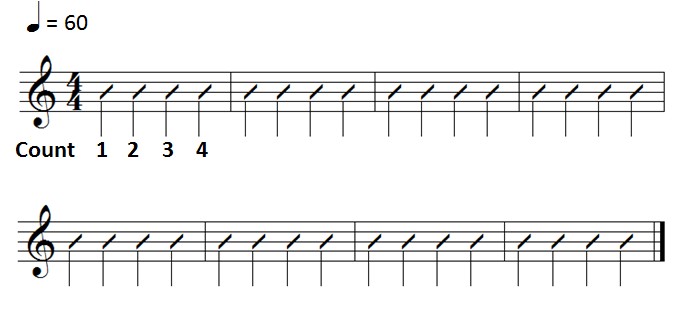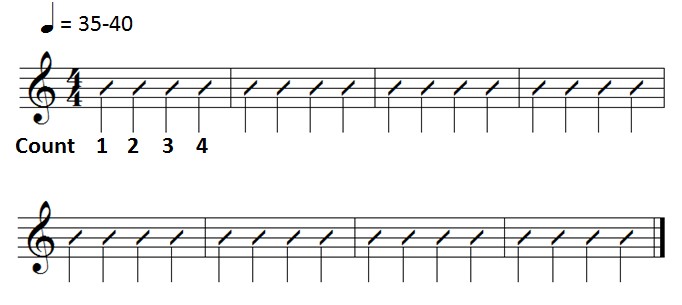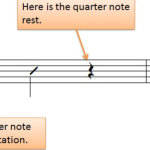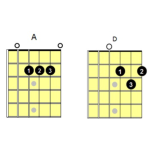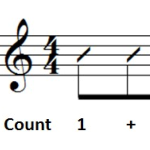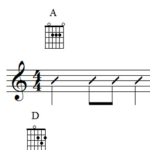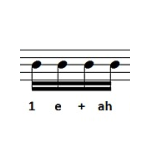Introduction
In our previous tutorial, Rhythm Guitar Basics Part 10, we looked at how to count eighth note rests.
As you will recall, an eighth note receives ½ of a beat. And—no big surprise—eighth note rests also each receive ½ of a beat.
But, you may have noticed that we changed the way we counted some quarter notes in Rhythm Guitar Basics Part 10.
This is Important!
In part 10, we counted quarter notes as:
But, in tutorials 4-9 we counted quarter notes as:
So what gives?
How to Determine the Best Way to Count Rhythms
What’s the best way to count quarter notes?
Well, the answer to this doesn’t just apply to quarter notes.
The way you count notes may need to change from measure to measure as you go through a song.
That’s right!
Some songs may require that you change how you count in some measures.
Generally, the best way to count time is based on the counting you need for the shortest duration of notes found in the measure.
So if there is even just one eighth note in a measure, it is best to count the entire measure as eighth notes.
If the measure contains only quarter notes and half notes then you would count off the measure in quarter notes.
As you may have guessed, there are exceptions to this. For example, if you’re playing a song that is quite slow, you may find it better to subdivide the beats even further. At really slow tempi (plural for tempo) some performers will count entire measures in 16th notes or even 32nd notes whether these notes are present or not.
Try this now:
Set your metronome to 60 beats per minute and clap and count the following quarter note pattern:
Now set the metronome as low as your metronome will allow (40 or even 35 beats per minute) and repeat the same rhythmic pattern.
Try it now.
How did you do?
There were probably a few spots where you were a little ahead or behind the beat. You probably found it surprisingly more difficult to play this simple rhythmic pattern accurately at a really slow tempo. This almost seems counter intuitive doesn’t it?
So why is this?
When you play at a really slow tempo, there is much more space (time) between each beat. This makes it much harder to keep time. Also, at quicker tempi, it’s easier to fake it. At a fast tempo, every thing goes by much faster and so if you are slightly ahead or behind the beat it not nearly as noticeable. At a slow tempo it is very obvious if you are ahead or behind the beat. This is why it is important to practice the rhythm patterns at very slow, slow, moderate, and quick tempi.
Now go back and repeat the previous exercise at 35—40 beats per minute, but this time count the quarter notes as if they were eighth notes.
When you subdivide the beat into eighths it gives you a signpost half way between the beat. This makes is easier to keep time.
So apply what you have just learned now. Go back and play through the rhythm exercises covered in the previous tutorial at very slow tempi. You will find this challenging, but the reward is great. The more you practice rhythm patterns at varying tempi, the more solid your sense of rhythm will be. As your sense of rhythm continues to improve, your overall guitar playing will too!
Recommended Resource
Isn’t it time to get your hands on a proven, fast and easy way to learn the basics of music theory for guitar? The Absolute Essentials of Music Theory for Guitar lays out what you need to know about guitar music theory so it’s crystal-clear.
Mastering the basics of guitar theory will open up a whole new world for you. You will learn guitar faster and feel and hear big improvements in your guitar playing.
Get started now and take the mystery out of music theory so you can learn guitar faster…




